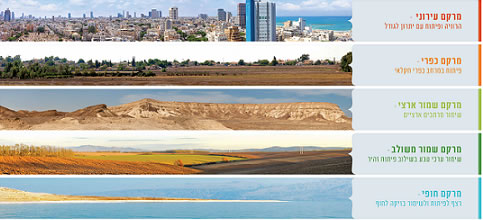National Master Plan 35 is a national master plan designed to define the planning policy and settlement layout in Israel by 2020. The plan, also known as the “Integrated National Master Plan for Construction, Development and Preservation”, was published in November 2000, and approved by government at the end of 2005. The plan’s stated goals are “to meet the construction and development needs of the country while maintaining open areas and land reserves for future generations.”
In 2007, the Planning Administration of the Interior Ministry commissioned a control and update review for the plan from the planning team. The target year was set as 2030. During 2016 the government approved Amendment 1, 1/A and 1/B for NMP 35.
The main tenets of the plan include strengthening existing cities and metropolitan areas, avoiding urban sprawl, introducing new urbanism measures such as mixed land uses and in general, more urban renewal, strengthening public transport, textured urban layouts, and more. The program considers beaches public assets, and calls for ensuring green buffer zones between cities and avoiding turning Israel into one big city. In addition, the plan recommends not building any new settlements in Israel.
As a national master plan, NMP 35 serves in most cases as the basis for all development and construction initiatives in Israel, and regional and local master plans are supposed to be based on the principles formulated in the document, and should not exceed the limits defined by the program

